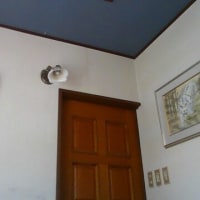I taught the electric line in force at an old school, and I noticed that they did ball symmetry without other electric charges near, but it was destroyed with other one near. I thought that such a common phenomenon was a some kind of symmetry breaking too. In this case, I want to suggest it fitting called an interactive symmetry breaking. Yes, I shall propose it of course. I thought that in the interactive symmetry breaking Nambu = Goldstone particles will appear much with the form of pair of an original particle and the antiparticle. In this case, many T and anti T pairs will appear at the electric field, and they will become photons translated in a gauge field.
私は母校において電気力線を教えていて、それらは近くに他の電荷が存在しないうちは球対称だが、近くに他の電荷が存在した場合には球対称が壊れることに気が付いた。私はこのありふれた現象もまたある種の対称性の破れだと考えた。私としてはそれは相互作用による対称性の破れだと呼ぶのがぴったりだと提案したい。はい、もちろん、私はそれを提唱するでしょう。私は相互作用による対称性の破れでは南部ゴールドストンボソンが正反の対の形で出るのだと考える。今回のケースではT反T対が電場においてたくさん出現するだろうし、それらはゲージ場においてフォトンに変換されるだろう。
Photons and Z bosons are piled up for quantum mechanics and exist, according to Electric weak unification theory. They are made up by a N or anti N and a T and anti T pair, each other perpendicularly, incline Weinberg angle θw.
電弱統一理論によればフォトンとZボソンは量子力学的混合によって形成されて存在している。それらはNまたは反NとT反T対から互いに垂直でワインバーグ角だけ傾いた関係によって混ざって出来ている。
私は母校において電気力線を教えていて、それらは近くに他の電荷が存在しないうちは球対称だが、近くに他の電荷が存在した場合には球対称が壊れることに気が付いた。私はこのありふれた現象もまたある種の対称性の破れだと考えた。私としてはそれは相互作用による対称性の破れだと呼ぶのがぴったりだと提案したい。はい、もちろん、私はそれを提唱するでしょう。私は相互作用による対称性の破れでは南部ゴールドストンボソンが正反の対の形で出るのだと考える。今回のケースではT反T対が電場においてたくさん出現するだろうし、それらはゲージ場においてフォトンに変換されるだろう。
Photons and Z bosons are piled up for quantum mechanics and exist, according to Electric weak unification theory. They are made up by a N or anti N and a T and anti T pair, each other perpendicularly, incline Weinberg angle θw.
電弱統一理論によればフォトンとZボソンは量子力学的混合によって形成されて存在している。それらはNまたは反NとT反T対から互いに垂直でワインバーグ角だけ傾いた関係によって混ざって出来ている。


















